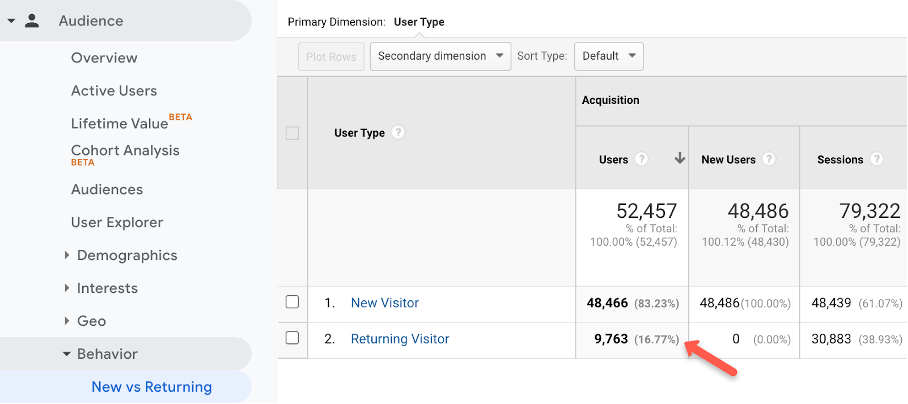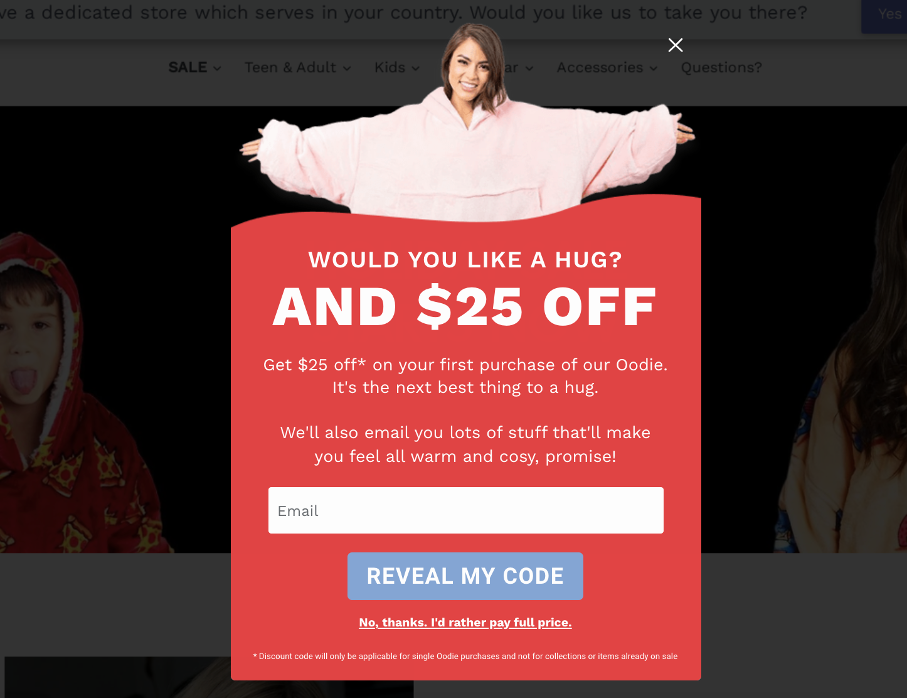- Blog
- Should I Use Website Popups? A Guide to Making the Right Choice
Should I Use Website Popups? A Guide to Making the Right Choice
-
Csaba Zajdo
- Conversion
- 6 min read
Table of Contents
When it comes to improving your website’s performance, you may find yourself asking, “Should I use website pop-ups?”
It’s a valid question, especially since pop-ups are known for their potential to boost conversions, collect email addresses, and engage website visitors. However, they can also frustrate users if not done right, leading to higher bounce rate and a poor user experience.
So, what’s the verdict? Should you embrace pop-ups or leave them behind?
In this article, I’ll break down when using website pop-ups makes sense and when it’s best to hold off. Whether you’re looking to grow your email list or improve user engagement, this guide will help you make an informed decision.
Let’s get started!
The 5 top reasons to use website pop-ups
Let’s start by examining when website pop-ups can be a game-changer for website owners.
1. Low returning visitor rates 📉
It doesn’t matter what kind of business you’re in, if your returning visitors are below 30%, you’ll need some channels to bring them back. (The screenshot below shows you where you can check your returning visitors in Google Analytics.)
Owned channels (like email and SMS marketing) are a great way of getting visitors back to your site. And when it comes to building a list, no other tool comes close to the effectiveness of popups.

2. Being a DTC brand 📦
Building and nurturing an email list is especially important when developing your own products and brand. To be successful, you’ve not only got to convince your visitors that they should buy from you, but also that they don’t want to buy from the (possibly) hundreds of other choices in your niche.
In most cases, this can take a lot of time. You can’t expect to convert every user on their first visit.
Rather, you need to use a “lead nurturing” approach. This involves learning about your visitors’ interests and preferences, keeping in touch, and offering personalized recommendations. In our privacy-focused world, you need to build your own channels to be able to do this.
Check out how a DTC brand, The Oodie builds an email list with a popup:

3. Long buying cycles ⏰
A buying cycle consists of various touchpoints. It usually takes several interactions with your business before a purchase will be made.
Using Google Analytics, you might check how many touchpoints your customers go through on average before deciding to purchase a product, though these numbers are often quite misleading due to attribution difficulties. No matter how much you focus on data collection, you won’t be able to capture all touchpoints (think: Word of Mouth or offline marketing).
Asking your customers “where have you heard about us” right after they purchase might give you a better idea of the true attribution.
4. You are selling “vitamins” 💊
There are products that people buy no matter what. We call them “medicine,” because these products are like medicine to your customers. You don’t need to nurture the relationship or ramp up the urgency. They’ll be buying regardless. In this case, you can operate without popups.
However, if your products are more like “vitamins” that people don’t necessarily need to buy, it’s just a nice thing to have, then it’s a good strategy to subtly increase the fear of missing out (FOMO) using popups.
That can help decrease cart abandonment and to increase conversion rates instantly.
5. You want quality feedback 💬
Sometimes a business needs to hear directly from its customers.
Sure, you can (and should) use Google Analytics or other tools to understand what’s working and what’s not. But these tools often don’t tell you the full story.
Popups are the most effective tool for generating quality feedback (besides calling up your customers manually).
The 5 top reasons not to use website pop-ups
While pop-ups are great in many situations, they’re not always necessary. Here’s when you should skip using pop-ups:
1. You already have high conversion rates 📈
If you already have high conversion rates and you don’t want to offer any extra incentives or push people to join your list, then you probably don’t need to use any popups.
2. Mostly returning visitors 🔁
B2B brands that mostly offer services to just a few customers who return to their website frequently, (e.g. a procurement management company) don’t have a reason to use popups. You already have a customer base and don’t need to urge them to convert or to subscribe to anything.
3. You already have an ultra-strong brand 💪
Why don’t popular websites like Amazon use popups? Because they already have a super-strong brand and they don’t have to convince customers with USPs or discounts that they’re the best place to purchase something. Customers will buy and return either way.
If you have a brand that’s similarly well-known and strong, you probably don’t need to use popups either.
4. You don’t need a list 📧
Not every brand or ecommerce website needs to go all out on building a list. For example, if you’ve built a microsite for a specific occasion (like a seasonal sale), you can do well without using any popups.
In general, if your business goals with a site are only short-term, you might don’t have to invest in building and nurturing a list.
5. Industry regulation 🚫
In some cases, you would be able to get extra conversions by using popups, but there are industry regulators in the way. It’s unfortunate if you aren’t allowed to use popups, but we all need to comply with the relevant laws where we do business.
FAQ
Not necessarily, but they can if not used correctly. Google has made it clear that intrusive pop-ups—especially those that block content immediately after a user lands on a page—can negatively affect your search rankings. To avoid any SEO penalties, make sure your pop-ups are user-friendly. This means not using large pop-ups that cover the main content and avoiding mobile pop-ups that disrupt the user experience. Opt for more subtle approaches like exit-intent pop-ups or scroll-triggered pop-ups to stay on Google’s good side.
It’s a mixed bag. Some users find pop-ups annoying, especially if they’re intrusive or poorly timed. However, if done right—offering value, such as a discount or helpful information—pop-ups can enhance the user experience and lead to higher engagement. The key is to be thoughtful with your pop-up design and timing. Use pop-ups sparingly and make sure they offer something your visitors actually want, like exclusive content or a special offer.
The best timing depends on the pop-up type and your audience. Generally, it’s a good idea to avoid showing pop-ups immediately after someone lands on your site. Instead, try exit-intent pop-ups that appear when a user is about to leave, or time your pop-up to appear after the user has scrolled down 50-60% of the page. You can also use pop-ups that appear after a user has been on the page for a certain amount of time, such as 30-60 seconds, to ensure they’ve had a chance to engage with your content first. Experiment with different timings to see what works best for your audience.
The takeaway
Pop-ups can be an incredibly powerful tool—when used in the right situations.
They’re great for boosting your conversion rate, building an email list, and keeping website visitors engaged, but they’re not a one-size-fits-all solution.
The key is knowing when and where to deploy them. If you’re dealing with high first-time visitor rates or long buying cycles, pop-ups are a must. But if you already have a strong brand or mainly cater to returning visitors, you might be better off without them.
Related articles:
Migration has never been easier
We made switching a no-brainer with our free, white-glove onboarding service so you can get started in the blink of an eye.

What should you do next?
Thanks for reading till the end. Here are 4 ways we can help you grow your business:
Boost conversions with proven use cases
Explore our Use Case Library, filled with actionable personalization examples and step-by-step guides to unlock your website's full potential. Check out Use Case Library
Create a free OptiMonk account
Create a free OptiMonk account and easily get started with popups and conversion rate optimization. Get OptiMonk free
Get advice from a CRO expert
Schedule a personalized discovery call with one of our experts to explore how OptiMonk can help you grow your business. Book a demo
Join our weekly newsletter
Real CRO insights & marketing tips. No fluff. Straight to your inbox. Subscribe now
Csaba Zajdo
- Posted in
- Conversion
Partner with us
- © OptiMonk. All rights reserved!
- Terms of Use
- Privacy Policy
- Cookie Policy
Product updates: January Release 2025








